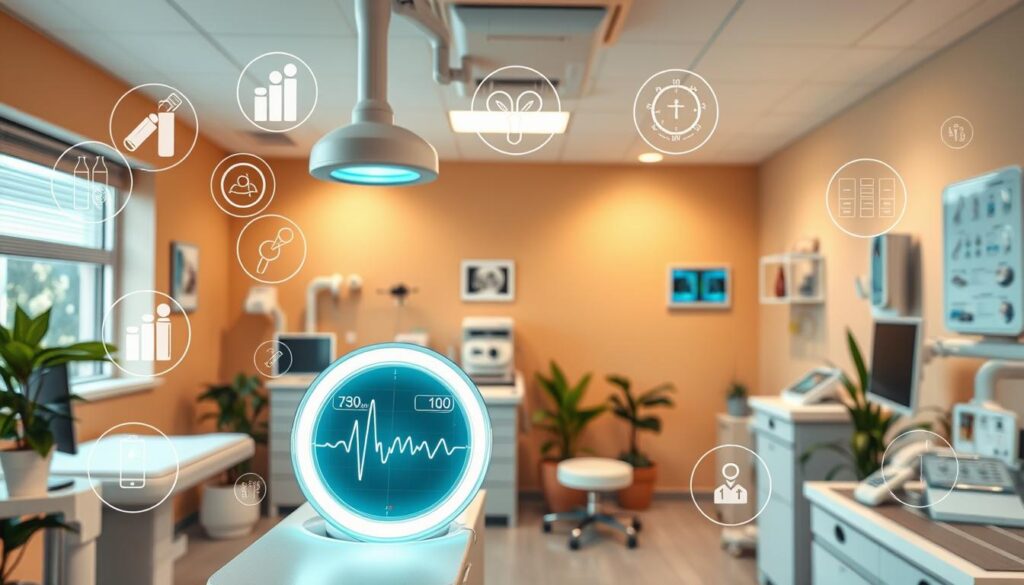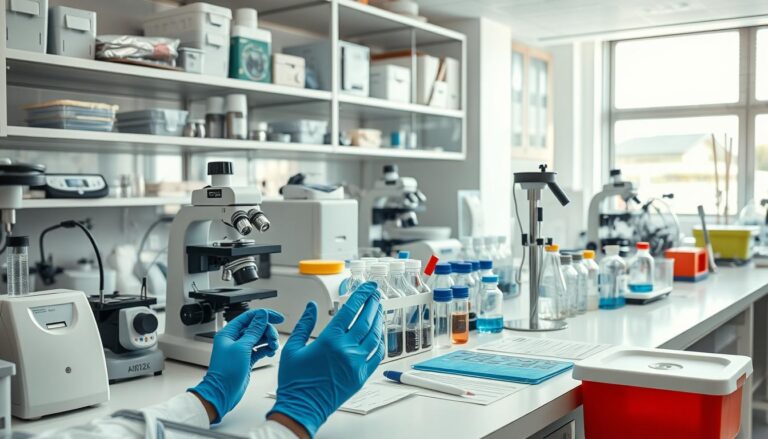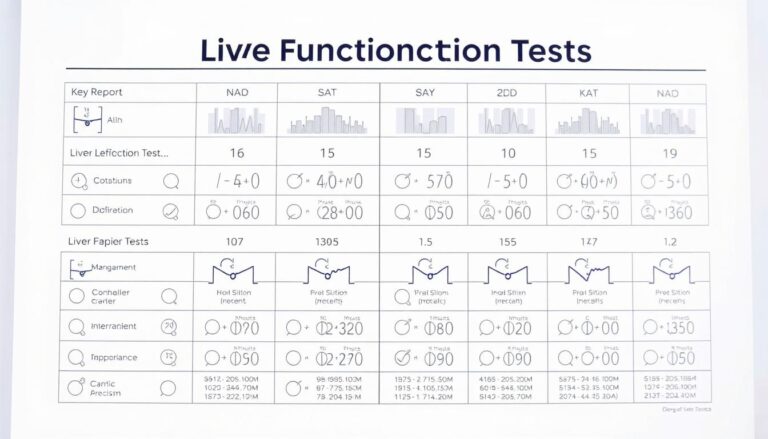How Early Detection of Diseases Can Save Lives: A Comprehensive Guide
Preventive care empowers us to take charge of our well-being and safeguard our futures. Early disease detection can transform lives and reshape the trajectory of health challenges. By embracing preventive healthcare, we can unlock the door to a healthier, more resilient society.
The World Health Organization estimates that 30-50% of all cancer cases could be prevented through early detection. This statistic highlights the impact of proactive healthcare measures across various medical conditions. Regular screenings and check-ups can significantly enhance our chances of identifying potential health issues early.

This guide explores how early disease detection can transform lives and empower individuals. We’ll uncover the latest advancements in screening technologies and the economic benefits of proactive healthcare measures. These powerful possibilities lie at the heart of this transformative approach to healthcare.
Understanding Preventive Healthcare and Disease Detection
Preventive healthcare is crucial for our well-being. It reduces the risk of chronic diseases through three key levels. These are primary, secondary, and tertiary prevention.
Regular health screenings catch silent conditions early. This makes them more treatable. Personalized preventive care considers individual risks and characteristics.
Early detection improves health outcomes significantly. The World Health Organization states that 50% of cancer cases could be prevented. Early diagnosis greatly increases survival rates for various cancers.
Preventive measures address leading causes of death. These include heart disease and stroke. Early intervention strategies can improve health outcomes. They also reduce healthcare costs.
Many tools exist for early disease detection. These include MRI, PET, and CT scans. Diagnostic biomarkers and digital health solutions are also available. Regular check-ups and risk assessments empower proactive health management.
| Screening Test | Recommended Age | Frequency |
|---|---|---|
| Breast Cancer Screening (Mammogram) | 40-74 years | Annual |
| Colorectal Cancer Screening (Colonoscopy) | 45-75 years | Every 10 years |
| Cervical Cancer Screening (Pap Smear) | 21-65 years | Every 3-5 years |
| Prostate Cancer Screening (PSA Test) | 55-69 years | Annual |
Preventive healthcare and disease detection offer numerous benefits. They empower individuals to be proactive about their health. This leads to better outcomes and a more sustainable healthcare system.
Early Detection of Diseases: Methods and Technologies
Medical tech has changed how we spot diseases. We now have tools to find health issues before symptoms appear. Let’s look at key methods reshaping early disease detection.
Advanced Screening Technologies
MRI, PET, and CT scans help detect diseases early. These tools can find body abnormalities before clinical signs show up. Ezra offers full-body MRI scans to check for cancer in 13 organs at once.
Diagnostic Biomarkers and Testing
Biomarkers are measurable signs of biological processes. They’re crucial for early disease detection. Genetic tests and special blood or urine analyses can spot diseases early on.
A blood test for Alzheimer’s is now available in the U.S. This provides a new way to detect this condition early.
Digital Health Solutions
Wearable health monitors and remote patient systems have changed health tracking. These tools watch vital signs and activity levels constantly. They can spot potential issues before they get worse.
Advanced screening, biomarkers, and digital health are changing disease detection. They allow for earlier treatment and better outcomes. As tech improves, we’ll see more breakthroughs in early detection.
The Economic Impact of Early Disease Detection
Preventive healthcare can greatly reduce total healthcare costs. The US spends an extra $55 billion yearly due to missed disease prevention opportunities. Early detection can prevent severe conditions and reduce expensive treatments.
In 2018, a sudden cardiac arrest hospitalization cost $24,500 in the US. This highlights potential savings from early heart disease detection. Early cancer detection can make treatment 2 to 4 times cheaper than advanced-stage cancer care.
Cancer kills 8.8 million people yearly, mostly in low- and middle-income countries. In 2010, cancer’s total annual economic cost was US$1.16 trillion. This includes healthcare costs and productivity loss.
Efforts aim to reduce premature NCD deaths by 25% by 2025. The goal is to cut them by one-third by 2030, aligning with Sustainable Development Goals.
| Health Condition | Economic Impact of Early Detection |
|---|---|
| Cancer | Detecting cancer early can lead to treatment costs being 2 to 4 times less expensive compared to treating advanced-stage cancer patients. |
| Cardiovascular Disease (CVD) | The cost of cardiovascular disease in the European Union in 2017 alone was 210 billion Euros. 87.8% of the early detection strategies for CVD were reported as cost-effective, and 22.5% reported cost reductions. |
Early disease detection offers clear economic benefits. Investing in cost-effective screening saves lives and reduces financial burdens. It benefits healthcare systems and society as a whole.
Critical Role of Regular Health Screenings
Regular health screenings are vital for catching diseases early. They can improve treatment outcomes and save lives. These tests include cancer screenings, cardiovascular checks, and diabetes tests.
Early detection often means better treatment options. Screenings can spot problems before symptoms appear. This makes them a crucial part of preventive healthcare.
Types of Essential Screenings
- Cholesterol screenings: High cholesterol increases the risk of heart disease. Regular checks are important for cardiovascular health.
- Fecal occult blood test: This test helps detect colorectal cancer. It’s recommended for people over 50.
- Pap test: It’s a key tool for finding cervical cancer early. Sexually active women under 65 should get regular Pap tests.
- Prostate specific antigen (PSA) test: This test can detect prostate cancer. However, it’s controversial due to potential overdiagnosis.
- Mammography: Breast cancer screening is crucial for women over 50. It should be done every 1-2 years.
- Colonoscopy: Colon cancer screening starts at 50. Earlier screening is needed for those with family history.
- Diabetes or prediabetes screening: Adults should start at 45. Overweight people with risk factors need additional screening.
Age-specific Screening Recommendations
Different screenings are recommended based on age and risk factors. Regular checkups become more important after 40. They’re also crucial for those with a family history of health issues.
Women’s health packages often include thyroid, breast cancer, and STD tests. They also check for diabetes and heart conditions. Men’s packages typically cover colon cancer, blood pressure, and prostate cancer screenings.
| Screening Test | Recommended Age |
|---|---|
| Cholesterol Screening | Starting at age 45 |
| Fecal Occult Blood Test | Starting at age 50 |
| Pap Test | Starting at age 21, with regular screenings until age 65 |
| PSA Test | Starting at age 50, with discussions about benefits and risks |
| Mammography | Starting at age 40 or 50, with regular screenings every 1-2 years |
| Colonoscopy | Starting at age 50, with regular screenings every 10 years |
| Diabetes Screening | Starting at age 45, with additional screenings for high-risk individuals |
Benefits of Predictive Analytics in Healthcare
Predictive analytics is changing healthcare for the better. It uses machine learning and big data to improve patient care. This technology helps predict diseases and create personalized prevention plans.
One key benefit is identifying high-risk individuals early on. AI-based disease prediction models analyze data to find patterns and risk factors. This allows for proactive strategies to prevent health issues.
Predictive analytics also aids in managing chronic diseases. It helps doctors assess treatments and adjust care plans when needed. This optimizes care and improves long-term outcomes for patients.
Predictive analytics in healthcare enhances population health management too. It tracks care trends and identifies high-risk groups. This helps create targeted interventions for specific patient needs.
Machine learning in healthcare has shown promise in emergency and surgical care. It assists medical professionals in making informed decisions quickly. This leads to better patient outcomes and lower healthcare costs.
As healthcare data grows, predictive analytics becomes more important. It turns data into useful insights. This technology helps prevent diseases and improve overall care quality.
Public Health Initiatives and Disease Surveillance
Public health initiatives boost early disease detection and prevention. The NBCCEDP offers cancer screenings to underserved communities. Disease surveillance systems track health trends and spot emerging threats.
Countries have improved their disease surveillance abilities. China expanded its FETP to fight epidemics in 2005. Brazil and Argentina used World Bank loans to enhance surveillance.
USAID changed its strategy to use data for better public health actions. Active surveillance gives timely info but costs more. Passive surveillance is cheaper and uses reports from hospitals.
Categorical surveillance focuses on specific diseases. Syndromic surveillance relies on clinical features without definitive diagnoses. It can be tricky due to lack of specificity.
Surveillance systems must match public health goals. They guide interventions and inform decisions. The U.S. BRFSS surveys behaviors that lead to disease or injury.
Pharmaceutical companies do large-scale surveillance for drug development. A strong disease surveillance network is vital. It helps detect and prevent public health threats early.
Investing in public health and new surveillance tech is crucial. It strengthens our ability to protect community health and well-being.
Conclusion
Early disease detection is vital for better health outcomes in India. It reduces healthcare costs and saves lives. Regular screenings and advanced technologies enable timely interventions, improving quality of life.
Public health initiatives and predictive analytics boost our disease prevention capabilities. These tools help detect infectious outbreaks and chronic conditions early. A comprehensive preventive strategy can create more efficient healthcare systems.
Innovation in healthcare must prioritize early detection and prevention. Increased awareness empowers individuals to manage their health proactively. Collaborative efforts can build a healthier, more resilient India.







